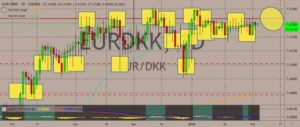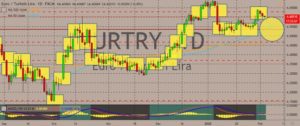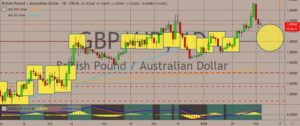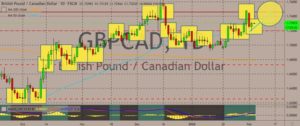Here are the latest market charts and analysis for today. Check them out and know what’s happening in the market today.
EURDKK
The EURDKK pair is trading within tight ranges on the upper levels of the daily charts, with the 50-day moving average serving as a solid support. Over in Denmark, the Danish central bank just made its biggest currency intervention in the forex market for four years. As a result, the country’s foreign exchange reserves fell by more than 9 billion crowns, or $1.3 billion, in January. The bank imposed the intervention in hopes of preventing the further weakening of the currency against the euro. It bought 12.1 billion crowns in January to prop up the Danish krone against the euro, to which it is pegged. It was the fourth consecutive month of interventions and also the highest purchase since December 2015. Last September, the bank cut its key rate to the lowest level on record, mirroring an ECB cut. After said cut, the Danish krone has been steadily weakening, reaching levels not seen since 2015.

EURTRY
The pair has recently hit a strong resistance and is currently trading the red for three consecutive sessions. Euro bears are giving way to Turkish lira bulls, paving the way for the price to hit levels near the 50-day moving average. Economic fundamentals continue to see positive signals as the eurozone faces risks from its central bank’s policy. Such risks are seen to raise structural issues. For geopolitics, tensions are rising and questions whether the killing of Turkish troops could dampen the Turkey-Russia relations. Starting April last year, Syrian government forces have engaged in military campaigns to take to the rebel stronghold in north western Idlib province. Last Monday, things turned extremely ugly when forces under President Bashar al-Assad killed eight Turkish military and civil personnel. Media reports have been somewhat contradicting when reporting about relationships between Moscow and Ankara.

GBPAUD
The pair’s price is tumbling down, with the British pound giving ground to the land-down-under’s currency. Prices could hit levels near the 50-day moving average, where it could hit a key support line and reverse back up. This comes after the Reserve Bank of Australia decided to leave the official cash rate on hold on its first monetary policy decision of the year. The decision also comes at a time when risk aversion is rampant, with the world and financial markets on edge amid the coronavirus scare. Opting to keep interest rates at the record low of 0.75% on Tuesday, the decision follows another strong month for the property market. There has also been a slight uptick in retail after the Christmas holiday spending. In 2019, the Australian central bank imposed three rate cuts, implanting them is June, July, and October. This month, the RBA stood by the stronger jobs figures and 0.9% boost in dwelling figures in January and kept rates the same.

GBPCAD
The pound managed to recover some of its recent losses against the Canadian dollar, hitting a solid support line just above the 50-day moving average. The Canadian dollar moved in lockstep with the developments in the coronavirus outbreak in China as well as oil price changes. Concerns about the outbreak’s effects on the demand for commodities still linger. Oil, which is a major Canadian export, saw its price fall as fears energy demand would suffer a long-term damage from the coronavirus scare offset the anticipation for more cuts in crude production from OPEC and its allies. According to one analyst, the environment surrounding the currency is still clouded with uncertainty, and traders might have to wait a week or two to see the real score and whether the virus is going to be effectively contained. The Canadian trade data is due this Wednesday, while the January jobs report is coming out on Friday.










COMMENTS